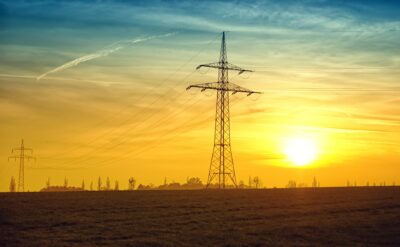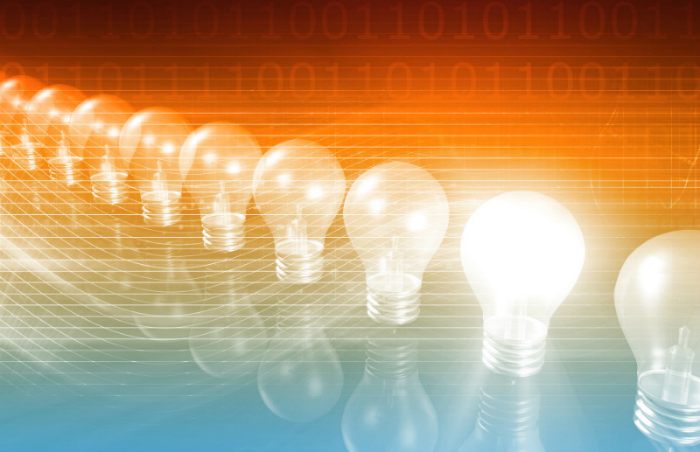What is Power Quality?
Power Quality
Power quality is an all-encompassing term that describes the suitability of electric power for consumption my motors and other loads. In a perfect alternating current power system, the current and voltage are sinusoidal in shape, in phase with each other, and provided at a specified frequency and voltage. Variations from this system lead to decreases in the quality of electric power. Power quality can be adversely affected by many conditions, including:
- Transient voltages and currents
- Harmonic distortion (created by non-linear loads)
- Variations in voltage magnitude
- Variations in frequency
- Voltage spikes
- Low power factor (voltage and current are out of phase)
All of these conditions can have deleterious effects on electronic equipment. Voltage spikes are often caused by the switching on and off of non-linear loads. A low power factor is a local condition that is generally caused by overly inductive loads. Voltage and frequency variations are most often utility-scale issues caused at the power generator; however, voltage sag (under voltage) can be caused locally when a power line is pulling more current than its intended use.
Harmonic distortion is created by non-linear loads, which pull current in an asymmetric manner. Typical non-linear loads include computers, printers, and fluorescent lighting. High power non-linear loads, such as rectifiers and variable speed drives (VSDs), are particularly problematic.
Power conditioning is a general term that describes actions taken to improve power quality. Power conditioning often involves the installation of a device, such as an electronic filter. Power conditioners can be installed to provide protection from specific power quality issues (such as voltage spikes and transients); or, they can be installed to mitigate the effects of a source of power quality issues (such as harmonics created by VSDs).
Harmonics can cause issues on a local power system scale (plant), or even the entire power grid. On the local level, harmonics are passed directly from the variable speed drive to its load (motor), which cause increased stress and heat in the motor, decreasing efficiency and motor life. Sine wave filters and load reactors can be inserted between the drive and motor to greatly decrease harmonics, increasing system efficiency and longevity.
Less obviously, non-linear loads such as rectifiers and motor drives create harmonic distortion upstream (line side) of the drive. Without protection, these harmonics are passed on to parallel equipment, which can cause erratic behavior and premature failure; on a large enough scale, line side harmonics can even cause problems for the whole power grid. For this reason, many standards (such as IEEE 519) have been defined and imposed by regulators to limit the amount of Total Harmonic Distortion (THD) that a user can impart on the utility grid. These regulations help protect the quality of the grid for all users. To squash line side harmonic distortion, line reactors or active front end LCL filters are typically installed immediately upstream of the non-linear load.
Variable speed drives, rectifiers, and other switch-mode power supplies have allowed motors to operate at variable speeds, which has increased both control and efficiency in many applications. Due to these advantages, as well as decreases in cost, these devices are gaining popularity. As non-linear loads become more and more prevalent, the need for power quality solutions will become increasingly paramount.
Power Quality at CTM

Power quality is the driving force behind our innovative work here at CTM.
Our progressive technology creates solutions for many industries to function with reliable power quality that also sets the bar for future power needs and concerns.
Through superior technology, our engineers have developed three phase inductors (reactors) and filters for the line (grid) side and load (motor) side of variable speed drives from 40 A through 3,000 A.
Our technologies provide size, weight, power loss and audible noise reduction to many industries, including oil and gas, building efficiency, the solar industry, wind power, the transportation industry, the military, and others.
To the solar and wind power industries, we offer battery energy storage and power conversion system solutions. We provide components for utility scale renewable systems, VSD controlled chillers, and active filters. In transportation, our solutions are found on electric trains powered by stored battery energy or fuel cells. We offer motor protection with reliable sinewave filters. These solutions are just a few of the customized options we can manage.
Through a strong value on innovation, we set the bar for power quality expectations. We have designed every aspect of our business and production to create the solutions for the future of power quality, with efficiency, reliability, and affordability in mind.
As intermittent, alternative fuel sources become the norm, the need for power quality solutions grows alongside the use of these sources.
 " alt="">
" alt="">